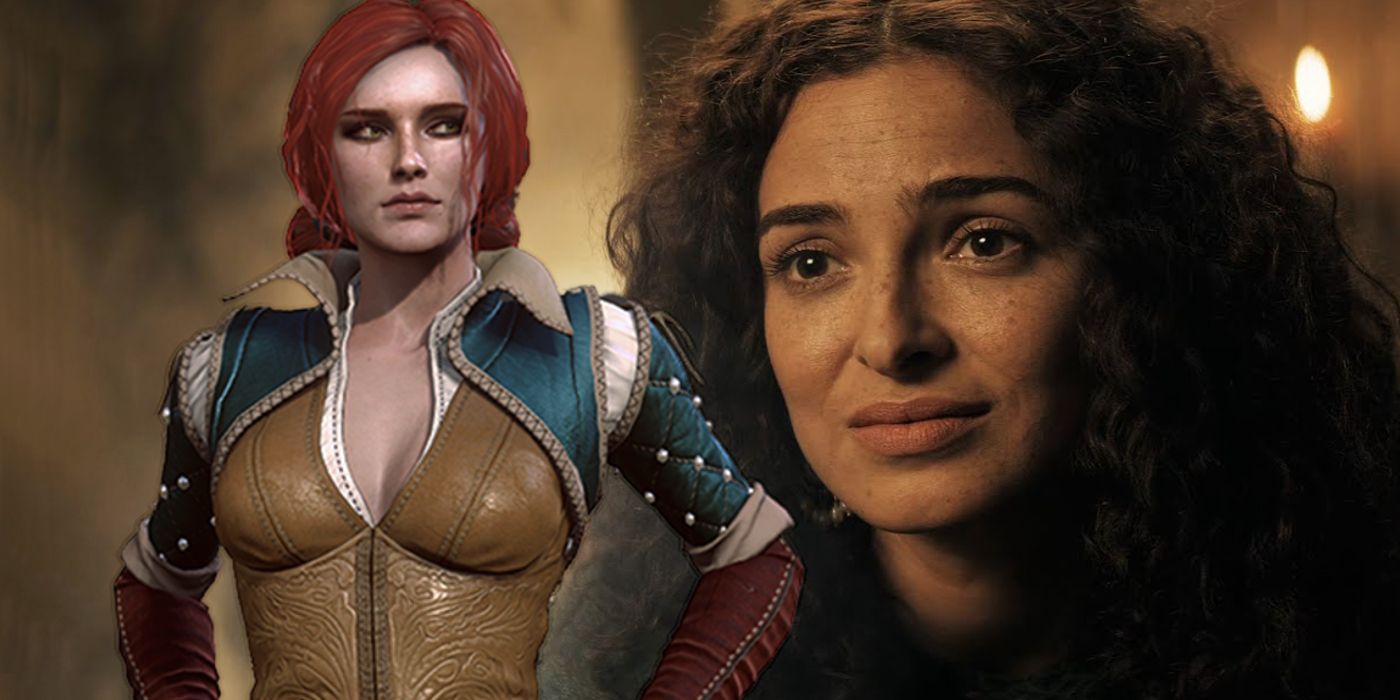
This chestnut-haired sorceress is the very first character that Geralt meets in the first Witcher game, proceeding to nurse the amnesiac Witcher back to health. Their romance blossoms throughout the first two games as the pair are virtually inseparable by Witcher 2: Assassins of Kings. However, Geralt and Triss enter into a tricky love triangle due to the introduction of Yennefer of Vengerberg in Witcher 3, where Triss and Yenn are both romanceable. Although these storylines are the first introduction of these characters for many, the games follow up on Andrzej Sapkowski’s eight-book series that has its own stories to tell.
Netflix’s Witcher Has A More Book-Accurate Triss Than Witcher 3

Despite Triss’ main character status throughout CDPR’s video game series, Netflix’s adaptation is more accurate to the sorceress as described in the original novels. Book Triss has a much more muted role in the Witcher’s life, and, as touched on in the show, is in an unhappy unrequited love with the Witcher. This removal of Triss and Geralt’s romantic element in the show may have been a disappointment to fans of Witcher 3‘s Triss, but it’s worth remembering that differences arise because CDPR had much more liberty afforded by the games being set some five years after the conclusions of the books’ main plot.
The Witcher 3’s Triss Has A Different Personality Than The Show’s

Triss’ character in Witcher 3 differs from the books and show in more than just her serious romance with Geralt, as her personality seems vastly different. In the games, CDPR cranked up Triss’ sweetness, owing to her becoming a tender partner for the then-recuperating Witcher. However, the show/book version of Triss is a lot more strong-headed and a little more cunning than the one seen in the games. Triss’ magical capabilities as a talented sorceress, however, remain consistent throughout The Witcher books, games, and Netflix series. Her proficiency as a healer with a penchant for magical potions is explored in the books, though she is ironically allergic to them herself.
The Witcher 3 also downplays Triss and Yennefer’s companionship. In the books, Triss’ unrequited infatuation with Geralt is a source of slight contention between Triss and fellow sorceress and Lodge member, Yennefer, but the two remain at each other’s sides regardless. CDPR allowed Triss to take advantage of Geralt’s amnesia and keep the Witcher for herself, despite Yennefer still being around. Although the books mention Triss and Geralt coupling in the past, this was regretted by Geralt and only elongated the sorceress’ infatuation. It seems out of character for Triss to manipulate amnesiac Geralt and withhold information about Yennefer and Ciri (whom she cares about deeply) for her own pleasure.
These differences between The Witcher games, show, and book are to be expected, as no two adaptations will do everything the same way. While the Netflix adaptation is more accurate to Triss’ personality and narrative (except that she appears earlier in the Netflix plot than in the books), neither the show nor the games have got Triss’ appearance quite right. The Witcher 3‘s crimson-haired, sweet-natured sorceress and Netflix’s darker-haired, more resolute healer do not entirely match up to the books’ headstrong young chestnut-haired character, although all still have their unique strengths.





